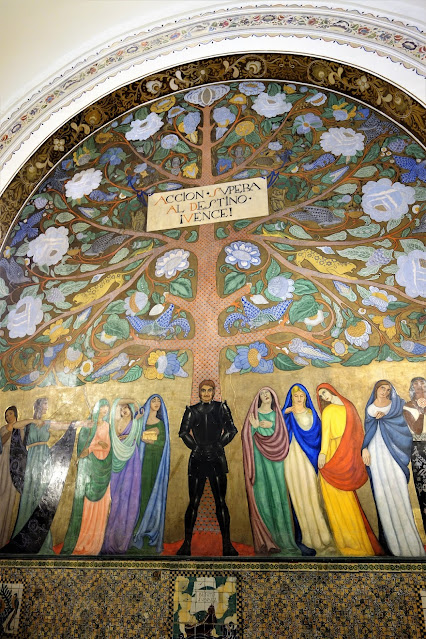While wandering around downtown, I visited yet another one of Mexico City's many museums. This one was the Museum of the Constitutions.
The building which houses the museum was originally the Church of San Pedro and San Pablo (Saints Peter and Paul), founded by the Jesuits in 1574. After Mexico won its independence from Spain in 1821, the building was used by the Constitutional Congress, and Mexico's first constitution was completed here in 1824.
The building is now owned by the National University of Mexico and is a museum chronicling the history of the nation's three constitutions (1824, 1857, and 1917). Frankly, it sounds sort of boring, and I have passed this building several times without visiting. The only reason I went inside this time was because there were signs advertising a special exhibit on "Mafalda".
"Mafalda" was an Argentinian comic strip... probably the most famous comic strip in all of Latin America... which has often been compared to Charles Schultz's "Peanuts". The title character is described in Wikipedia as a six-year-old girl "who often leaves her parents at a loss by asking about mature or complex topics". I like "Mafalda" even if I don't "get" the humor of every single comic strip. Humor in another language is not always easy to understand.
The exhibit had a few images of comic strips which deal with the topic of feminism. There really wasn't very much to the show. The display on the history of the Constitution was, as I had expected, rather boring even though I am a history buff and I speak the language.
The saving grace which made my visit worthwhile was the building itself. The former church features artwork by the artist Roberto Montenegro. Although he is not nearly as famous as painters such as Diego Rivera to those outside of Mexico, Montenegro was an important figure in 20th century Mexican art.
At the far end of the museum, where the church altar once stood, is his mural called the "Tree of Life".
The work was commissioned in the 1920s by José Vasconcelos, the Secretary of Education, and is one of the first paintings of the muralist movement. The central figure, the man in black armor, looks rather sinister to me, but he is supposed to represent the fight for a quest... in this case Vasconcelo's quest to bring education to the illiterate masses.
Montenegro also designed a couple of stained-glass windows for the building.
"El Jarabe Tapatío" depicts Mexico's national dance, the one that we "gringos" refer to as the Mexican Hat Dance.








No comments:
Post a Comment